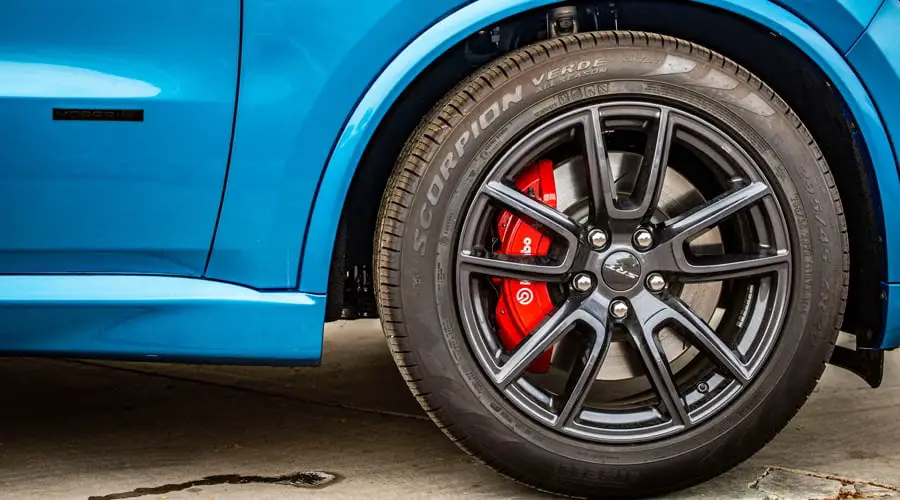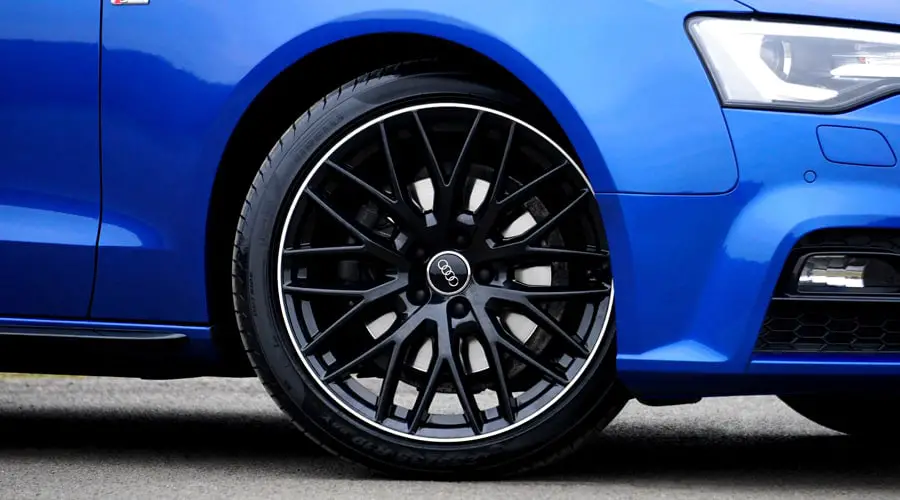
Source: canva.com
If you’ve ever wondered what all the different parts of a car wheel, or “rim” are, read on. We’ll explain bolt patterns, tires sizes and more!
No matter what vehicle you drive, the wheels are central to giving your vehicle a nice look and good performance. While your car is obviously going to have a set of wheels on it when you purchase it, you may want to do some research on after stock wheels. You have the option of staying with the stock wheel or getting a nice, shiny looking upgrade. There are so many types and styles that your choices are almost endless. It helps to know what you are looking for if you decide to shop for wheels since there are so many options available. Knowing the definition of wheel parts along with the anatomy of a wheel is important as well.
Wheel Anatomy 101
First, it is important to know that your wheel is not the rubber tire part. A wheel is made up of many parts other than the tire and a shiny rim, including:
- Center bore – the opening that fits on the axle and attaches to the vehicle. Usually, bores are fairly large so they fit on more vehicles. Hub centric rings are used to make up any difference.
- Center caps – cover the center bore and improve looks.
- Center disc – the part of the wheel where the bolt holes are creating a bolt circle. Every part of the wheel is connected to a center disc.
- Lug holes – the bolt circle with 4 or more holes. This creates the bolt pattern.
- Spokes – connect the center disc to the outside ring of the wheel. It enforces the structural integrity of the wheel.
- Outer lip – the part of the wheel in front of the spokes. It defines whether you have a deep dish wheel or not. It’s style rather than function.
- Barrel – the structure important for mounting the tire. It is designed based on the front mount or the reverse mount. The edges are called flanges and they keep the tires from coming off as they are flared.
- Beads – the part where the tire edges sit on the wheel. Mounting humps are on both sides of the barrel and keep the beads apart so the tire doesn’t move away from the edge of the wheel.
To get these parts working together, there are different manufacturing methods. Design and material are critical. Wheels may be cast which means the molten metal is poured into a mold to form the wheel. This can be done with gravity or pressure casting and creates a one-piece wheel.
Wheels can also be made with flow-forming where casting and stretching processes are used together. Metal is poured into a mold then rollers shape and stretch it to form the wheel.

Source: canva.com
And finally, forging. A block of metal called a billet, usually aluminum, is used then crushed into shape using large amounts of pressure. Rotary forging does this and adds high-speed spinning forces a stronger build.
Want to learn more about aftermarket wheel brands?
Wheel and Tire Size
You can’t discuss the anatomy of a wheel without learning about wheel sizes. Parts of a car wheel remain consistent but their size is altered per vehicle. Wheel diameter can go from a smaller 15 inches to extra-large 26 inches. You can change yours from regular 16-inch stock for better looks and performance. Just be aware that, if you move away from stock tires, you need to make other adjustments since your vehicle is designed based on stock. If you are getting larger wheels then the size of the tire goes smaller. You need to keep the overall diameter with your changes, so the wheel and tire combined still cover the same distance as the stock ones.
Read more about Tire Size here.
Bolt Pattern
This term refers to the number of bolts on the wheel and the diameter of the circle they are in. This can be done in metric millimetres or inches. If you need to measure the diameter, even-numbered bolt patters should be done from bolt center to bolt center. Odd numbers go from the center of the top bolt to the bottom of the lower one. The bolt pattern can vary between wheels so make sure you choose one that works with your vehicle and has the design you want.
One or Two Piece Wheels
One-piece wheels are exactly that. The whole wheel is either cast or forged in one piece. This is how most wheels are produced. These wheels tend to be stiffer than a two-piece but are solid and hold up well in tougher driving conditions. If you bang them up, they have to be replaced as a whole piece compared to the two-piece wheels.
Two-piece wheels are created in two sections. The center is one part and the outer is another. These are then bolted together. This creates a stronger wheel. Aside from strength, two-piece wheels allow for more stylized finishes as they combine metals and finish design that can’t be done with one piece. They also have different thicknesses and widths. When a two-piece gets damaged, you may be able to replace just one part versus the whole wheel.
Final Thoughts
Wheels are not just parts you stick on your car because one got dinged up. They can actually enhance your vehicle’s look and overall performance. While many of us are uneducated around this part of a car, knowing that wheels are not tires and understanding their basic anatomy is a big help if you want to upgrade your ride. Knowing the parts of a car wheel means you are not only able to buy replacement parts in a knowledgeable way but also choose ones that fit your car and increase its style and performance when out on the road. Definition and anatomy are not hard to learn and make your wheel choice informed, within your budget, and the perfect option when you go to upgrade your vehicle.